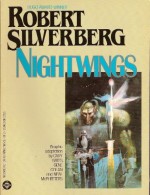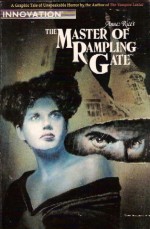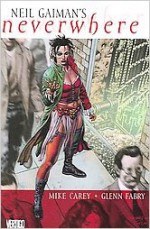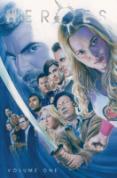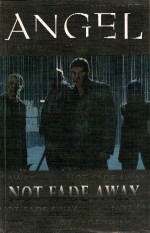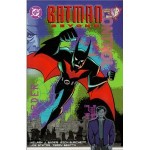
By Hilary J. Bader, Rich Burchett, Joe Staton & Terry Beatty (DC comics)
ISBN: 978-1-56389-604-0
The Batman Animated TV series masterminded by Bruce Timm and Paul Dini in the 1990s revolutionised the Dark Knight and also led to some of the absolute best comicbook adventures in his seventy-year publishing history with the tie-in monthly printed series. With the Dark Knight’s small screen credentials firmly re-established, follow-up series began (and are still coming), even recently feeding back into the overarching DCU continuity.
Following those award-winning cartoons in 1999 came a new incarnation set a generation into the future, featuring Bruce Wayne in the twilight of his life and a new teenaged hero picking up the eerily-scalloped mantle. In Britain the series was inspirationally re-titled Batman of the Future but for most of the impressed cognoscenti and awe-struck kids everywhere it was Batman Beyond!
Once again the show was augmented by a cool kid’s comicbook and this collection re-presents the first 6-issue miniseries in a hip and trendy, immensely entertaining package suitable for fans and aficionados of all ages. Although not necessary to the reader’s enjoyment, a passing familiarity with the TV episodes will enhance the overall experience…
All stories are written by Hilary J. Bader and the book opens with a two part adaptation of the pilot episode, illustrated by Rick Burchett & Terry Beatty. ‘Not On My Watch!’ offers brief glimpses of the last days of Batman’s crusade against crime before age, infirmity and injury slow him down to the point of compromising his principles and endangering the citizens he’s sworn to protect.
Years later Gotham City in the mid-21st century (notionally accepted as 2039AD – 100 years after the comic book debut of Batman in Detective Comics #27) is a dystopian urban jungle where angry, rebellious school-kid Terry McGinnis strikes a blow against pernicious street-punks The Jokerz and is chased out of the metropolis to the gates of a ramshackle mansion.
Meanwhile his research-scientist father has discovered too much about the company he works for…
Wayne-Powers used to be a decent place to work before old man Wayne became a recluse. Now Derek Powers runs the show and is ruthless enough to do anything to increase his profits… Outside town Terry is saved from a potentially fatal encounter with the Jokerz by a burly old man who then collapses. Helping the aged Bruce Wayne inside the mansion Terry discovers the long neglected Batcave before being chased away by the surly Wayne but doesn’t really care until he gets home to find his father has been murdered…
A storm of mixed emotions, he returns to Wayne Manor…
The concluding chapter ‘I Am Batman’ sees McGinnis attempt to force Wayne to act before giving up in frustration and stealing the hero’s greatest weapon; a cybernetic bat-suit that enhances strength, speed, durability and perception. Alone, untrained and unaided the new Batman sets to exact justice and revenge…
In the ensuing clash with Powers the unscrupulous entrepreneur is mutated into a radioactive monster named Blight before Wayne and Terry reach a tenuous truce and understanding. For the moment Terry will continue to clean up the Dark Knight’s city as a probationary, apprentice hero…
With issue #3 Bader, Burchett & Beatty began to tell original stories in the newly established future Gotham, commencing with ‘Never Mix, Never Worry’ wherein Blight returns to steal a selection of man-made radioactive elements which can only be used to cause harm… or can they?
Joe Staton took over the pencilling with #4 as a schoolboy nerd freed a devil from limbo and old man Wayne introduced the cocksure Terry to parapsychologist Jason Blood and his eldritch alter ego Etrigan the Demon in the spooky shocker ‘Magic Is Everywhere’, a sentiment repeated when a school-trip to the museum unleashed ancient lovers who fed on the life energy in the delightfully comical tragedy of ‘Mummy, Oh! and Juliet’
This captivating compendium of action and adventure ends in another compelling and edgy thriller as Terry stumbles into a return bout with a shape-shifting super-thief in ‘Permanent Inque Stains’, only to find that there are far worse crimes and far more evil villains haunting his city…
Fun, thrilling and surprisingly moving, these tales are magnificent examples of comics that appeal to young and old alike and are well overdue for re-issue. And once that’s done, there’s still another 24 issues from the 1999-2001 run plus a Return of the Joker one-shot to collect in spiffy graphic novel compilations…
In 2000 Titan Books released a British edition re-titled Batman of the Future (to comply with the renamed UK TV series) and this version is a little easier to locate by those eager to enjoy the stories rather than own an artefact.
© 1999 DC Comics. All Rights Reserved.



